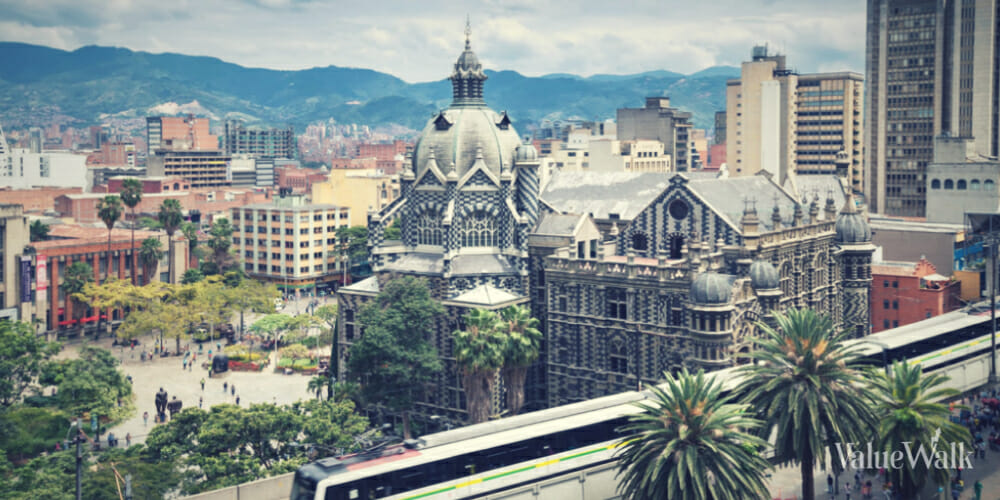Medellin, where Latin America’s biggest fashion event is hosted, is ultra modern, with lightning fast internet and the luxuries of any other tech hub in the world. The so-called “City of the Eternal Spring,” owing to its beautiful weather year round, has undergone a massive transformation over the years.
I was expecting armed military men at the airport checking us for drugs, et cetera upon arrival. Totally wrong. The airport was a breeze. We were in our cab after a five minute walk.
Q3 2022 hedge fund letters, conferences and more
Latin America's Leading Tech Hub
Medellin went from Time Magazine’s “most dangerous city on earth” in 1993 to the Urban Land Institute’s “The innovative City of the Year” in just twenty years. This happening city is quickly becoming the leading tech hub in Latin America, and it's no secret why: a talented workforce, modern amenities, and a deeply rooted tech culture makes this city one to keep on your radar.
During the days of Pablo Escobar and the drug cartels in the 1980s, Medellin gained an unbecoming reputation. Crime rates remained high in the 1990s. Since then, things have changed. For example, crime rates have fallen by 95% since the time of Escobar.
Poverty has also fallen by 66% during that time. Medellin, the world’s first city to use cable cars for mass transit, has recently been considered safer than the many US cities, including Baltimore, St. Louis, Detroit and New Orleans. In the city, there are more than 1,100 security cameras and more than 7,000 policemen.
Citigroup and Wall Street Journal awarded the city in 2013 “World City of The Year” for its innovative urban center initiatives, and the fledgling tech hub became in 2018 the first Spanish-speaking city to join the swirling-in-controversy World Economic Forum's (WEF) Fourth Industrial Revolution Network Affiliate Center. In 2019, Newsweek named it the World’s Smartest City.
In 2019 at the WEF in Davos, Switzerland earlier this year, Medellin was tapped to represent Latin America as a Centre for the Fourth Industrial Revolution.
The Fourth Industrial Revolution is defined as “the age in which scientific and technological breakthroughs are disrupting industries, blurring geographical boundaries, challenging existing regulatory frameworks, and even redefining what it means to be human,” according to the Centre for the Fourth Industrial Revolution Network.
Medellin Is Home To Excellent Universities
Medellin, which is also famous for its street art, might not boast big startup IPOs and acquisitions, but it is home to excellent universities and a coder community hosting meetups and conferences throughout Latin America. The city has more than 40,000 people who meetup and discuss AI, IoT, blockchain, and other technology topics.
Meanwhile, hundreds of foreign companies have in recent years opened offices there, as well as many more incubators and investment funds. Colombia also lowered tax rates to attract foreign investment, and is home to Bancolombia, the largest commercial bank in Colombia and one of the largest in Latin America.
The City of Medellin became the industrial capital of Colombia in the 1950s when it founded Empresas Públicas de Medellin (EPM), a public utilities company and one of the largest corporations in the country. EPM today contributes hundreds of millions of dollars yearly to social programs, helping Medellin to become a booming metropolis. Like all cities, it’s not a public-private enterprise that gives this city it’s life—it’s the people.
In December, the city, with its huge nature reserve right on the outskirts, is covered with thousands of lights, creating the famous Christmas lights display National Geographic calls one of the ten most beautiful in the world. The city has several festivals, tech conferences, and exhibitions year-round, as well as the most modern tunnel in Latin America and a modern metro system.
I got a taste of all this while attending the crypto conference Cosmoverse. According to the locals, 20-25 years ago, narcos wielded power throughout Colombia. They gave the poor money to put their children in good schools to become engineers, doctors, and scientists. That might be a myth.
Either way, the city is world-class today and will soon be known as the home of big tech startups and perhaps even some unicorns, too. Some coder must now be seated at the wooden tables of a fonda (restaurant) somewhere in the city while eating arepas with red beans, and building something special.













